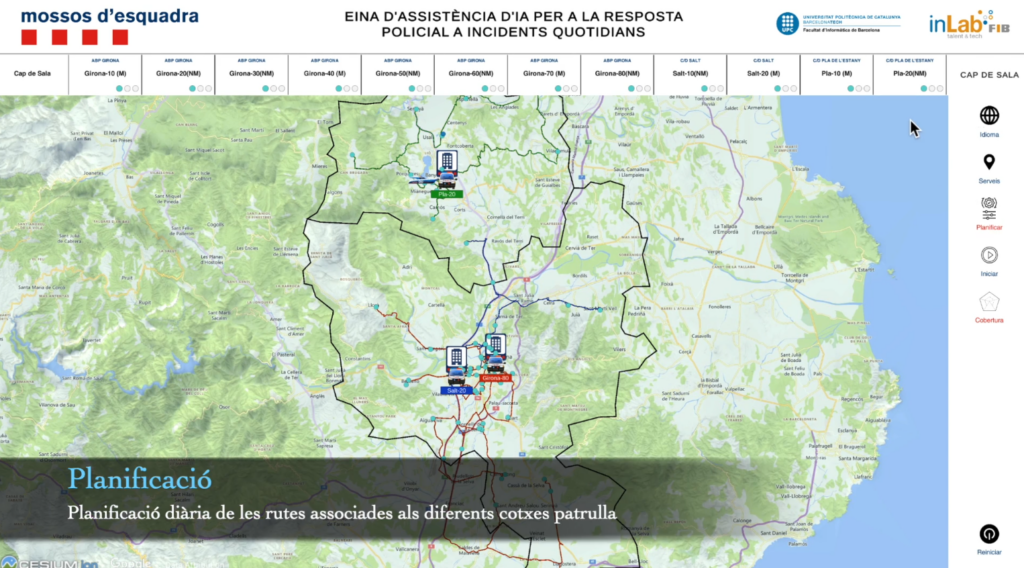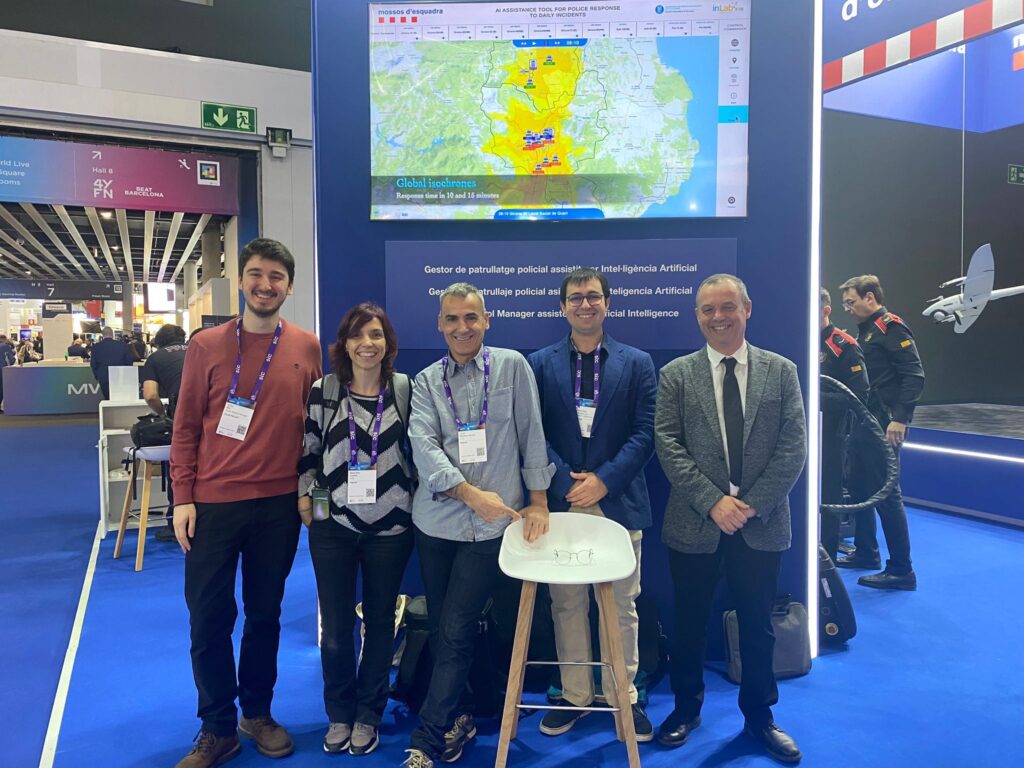Policia de la Generalitat de Catalunya – Mossos d’Esquadra: AI-Assistance tool for the daily resolution of police incidents.
The inLab FIB, the innovation and research laboratory of the Facultat d’Informàtica de Barcelona (FIB) of the Universitat Politècnica de Catalunya – BarcelonaTech (UPC), has developed in collaboration with the Policia de la Generalitat de Catalunya – Mossos d’Esquadra the proof of concept of an assistance tool for police response to everyday incidents based on artificial intelligence. The tool will be demonstrated at MWC.
The Policia de la Generalitat de Catalunya – Mossos d’Esquadra is the integral police force of Catalonia with competences throughout the territory and is responsible for the functions of public safety, administrative police, judicial police, intervention, and community policing.
In September 2023, UPC and Mossos d’Esquadra signed a collaboration framework agreement to jointly carry out scientific and technological research and innovation projects through inLab FIB in areas such as data science, intelligent mobility or cybersecurity.
Within the framework of this agreement, inLab FIB has developed in collaboration with the Mossos d’Esquadra the proof of concept of an assistance tool for police response to everyday incidents based on artificial intelligence. This tool will be demonstrated at the police stand at MWC 2024, located in Hall 6 stand 6A50.
The proof of concept developed provides an artificial intelligence system for dynamic routing of police vehicles and for the real time coverage of incidents attending a real and programmed planning of police points of interest in order to comply with the expected response time to the service charter of the Policia de la Generalitat de Catalunya – Mossos d’Esquadra.
The result of this proof of concept is an automatic route planning for each police vehicle on an incident-by-incident basis, which can be directly controlled by the room manager. The system incorporates an incident management support tool that makes it possible to dynamically and automatically recalculate the new routes resulting from the needs derived from the coverage of these incidents. The solution also provides a 3D visualization of the routes and vehicles involved.

